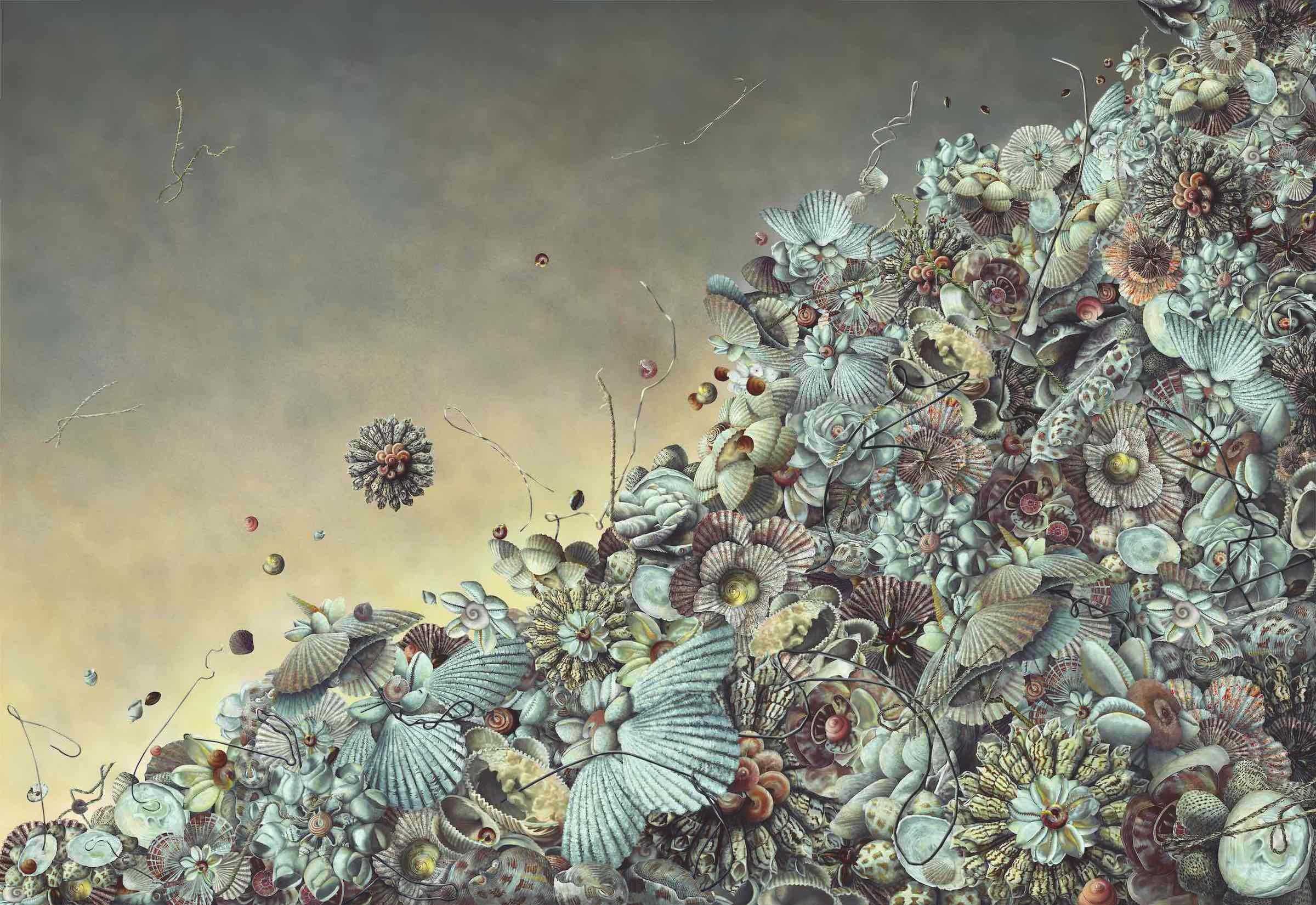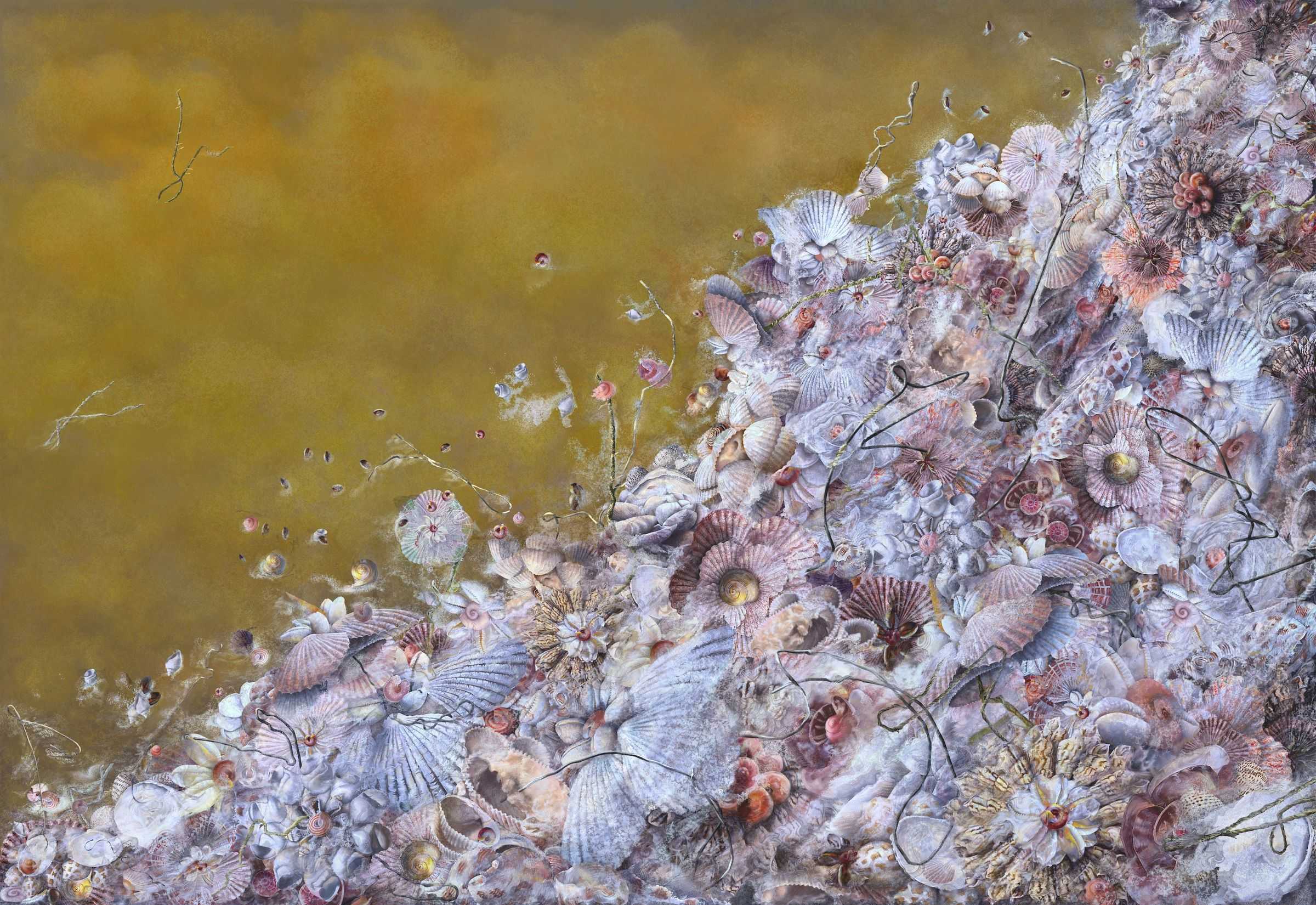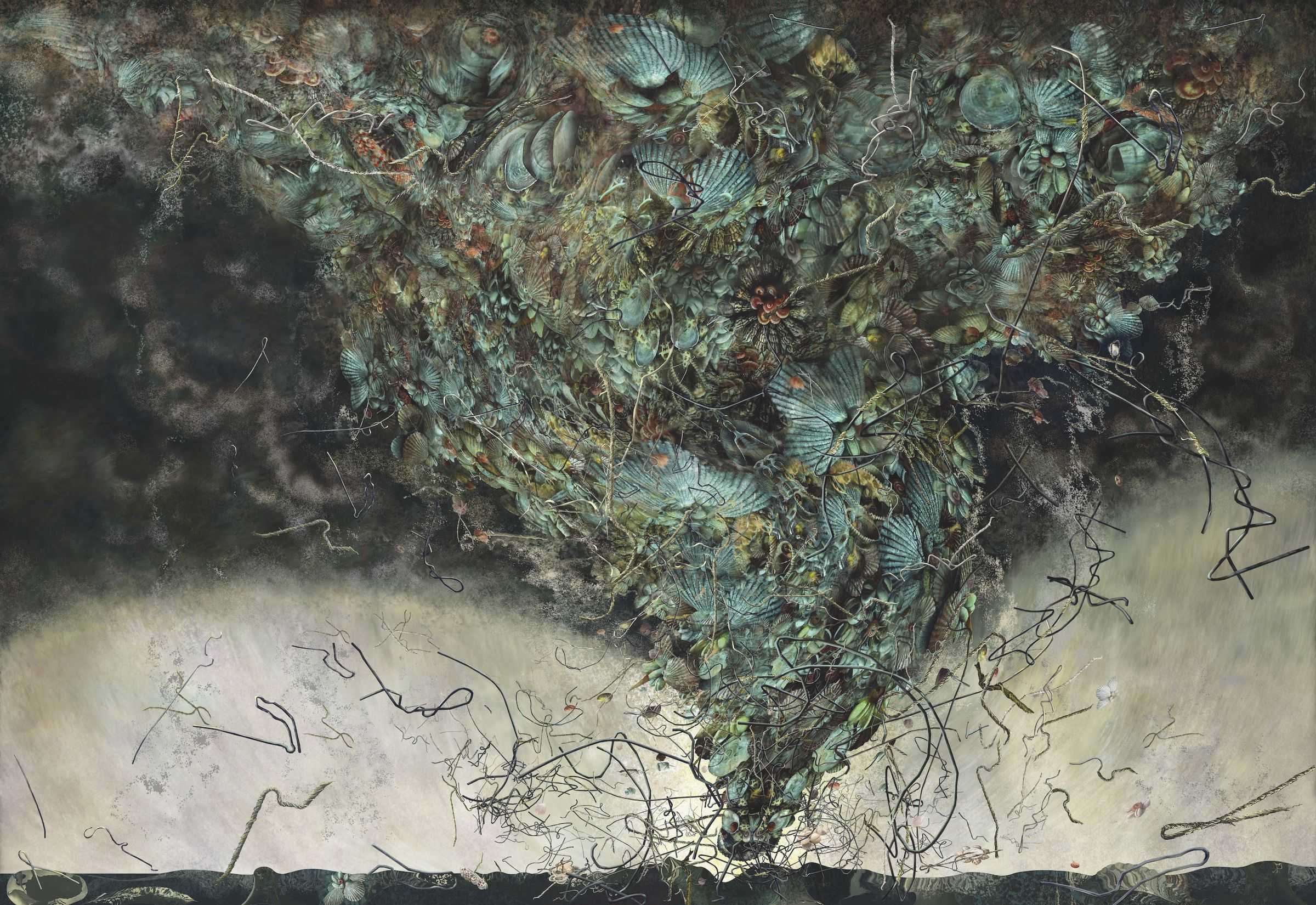Plausible Objects / Difficult Things
Frances Woodley
I’m not sure whether to call these digital works ‘paintings’, though I’d like to. Their roots go back to my research into contemporary painting’s conversations with the still life tradition, but they also depart from it.
In including my digital paintings in this exhibition, I am situating them in relation to conversations around contemporary painting as well as those concerning the validity of digital media as a painting process and practice. Digital painting gives me the freedom to play with and transform everyday objects – discarded kitsch, unloved tourist tat, disposable tableware and abandoned ornaments – in ways I cannot imagine doing in painting alone.
Sixteenth-century still life painting in the pre-perspectival ‘Flemish style’ intrigues me, paintings by artists such as Jacob van Hulsdonck, Floris van Dijck and Clara Peeters and the then emerging natural history illustrators such as Joris Hoefnagel and Jan van Kessel. Early modern Flemish still life depends for its effect on the viewer scoping the surface of a paintingrather than colluding in its illusion. There is no vanishing point. Instead, objects tend to occupy a middle ground. Composing paintings in this way ensures that detail is not compromised by the illusion of distance or the edge of the viewer’s field of vision – a parallel shared with digital photography. When looking at these still lifes the viewer’s eyes land on objects placed discretely – foodstuffs, sweetmeats, fabric and tableware. They are painted for visual delight with only the merest nod to the mortal dangers of greed and gluttony. Tables and ledges are tilted upwards so as to maximise their visual impact and the viewer’s vicarious gustatory experience. Everything is on show and everything is attended to by the painter. The precarity and excess of their arrangements, which include depictions of spillage, splitting, oozing, tipping and tumbling, have little effect on the paintings’ plausibility, instead the visual risk appears to heighten the experience of looking. Time is synchronous in these paintings and freshness is everlasting. Light is invented and directed without a hint as to the source of its luminosity. When seen close up, especially if painted on copper, their surfaces are smooth and velvety while some are almost mirror like. The flatness of these objects, the depthlessness of their images and their obsessive rendering have infiltrated my practice too.
My painted shell flowers are neither symbolic nor significant, neither are they infused with nostalgia or social comment. They’re disposable ubiquitous kitsch, cobbled together from seashells stuck together with wire and twisted paper, desired for a moment then discarded. I came across a small bunch of these shell flowers in a junk shop, a refuse heap of sorts. At first, I thought that the flowers were a traditional tomb ornament still to be seen in Welsh nineteenth-century graveyards. However, a quick Internet search revealed them to be tourist tat from the Philippines. Having rescued them, I brought them back to life like a sixteenth-century natural history painter might have done, by trying to depict them as faithfully as possible. This proved difficult as the digital medium brings with it its own ‘materiality’. These digital studies were then assembled, copied, manipulated and composed before undertaking further digital painting. Worked up into new forms of painted refuse, these paltry imitations of nature now assume new life as components of larger more precarious things, a dump or tornado, forms that like their still life predecessors, bring to mind the temptations of beauty and excess, but also of waste. In the process of painting, and digital enlargement and miniaturisation, the shell flowers have become indecipherable things in a closed world devoid of perspectival reference, one in which space and light are directed, not sourced. As transformed things, piled high, tipped and tumbled in unspecific spaces, they are neither natural nor artificial, neither big nor small, neither old nor new. Viewers can’t quite work out what they are or how they have been painted, their materiality and plausibility are a matter of conjecture, their authenticity as paintings disputed.
© Frances Woodley
Image 1. Frances Woodley, Dump, 2020, digital painting, 100×120 cm. Photo the artist. © the artist.
Image 2. Frances Woodley, Foaming Dump,2020, digital painting, 100×120 cm. Photo the artist. © the artist.
Image 3. Frances Woodley, Tat Tornado, 2020, digital painting, 100×120 cm. Photo the artist. © the artist.





